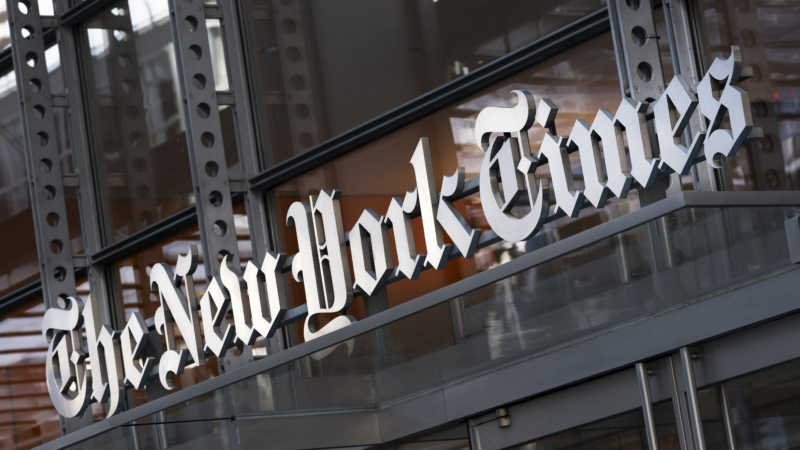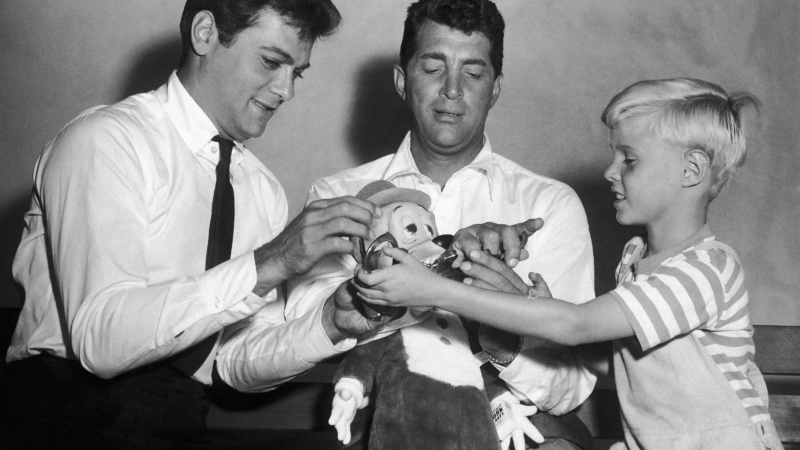‘The New York Times’ takes OpenAI to court. ChatGPT’s future could be on the line
A group of news organizations, led by The New York Times, is taking ChatGPT maker OpenAI to federal court on Tuesday in a hearing that could determine whether the tech company has to face the publishers in a high-profile copyright infringement trial.
Three publishers’ lawsuits against OpenAI and its financial backer Microsoft have been merged into one case. Leading each of the three combined cases are the Times, The New York Daily News and the Center for Investigative Reporting.
The hearing on Tuesday is centered on OpenAI’s motion to dismiss, a critical stage in the case in which a judge will either clear the litigation to proceed to trial or toss it.
The publishers’ core argument is that the data that powers ChatGPT has included millions of copyrighted works from the news organizations, articles that the publications argue were used without consent or payment — something the publishers say amounts to copyright infringement on a massive scale.
“[OpenAI’s] unlawful use of The Times’s work to create artificial intelligence products that compete with it threatens The Times’s ability to provide that service,” the newspaper’s attorneys wrote in an amended complaint filed in August 2023. “Using the valuable intellectual property of others in these ways without paying for it has been extremely lucrative for [OpenAI].”
OpenAI has argued that the vast amount of data used to train its artificial intelligence bot has been protected by “fair use” rules. That is a doctrine in American law that allows copyrighted material to be used for things like educational, research or commentary purposes.
In order to clear the fair use test, the work in question has to have transformed the copyrighted work into something new, and the new work cannot compete with the original in the same marketplace, among other factors.
Writing in a motion to dismiss, lawyers for Microsoft, OpenAI’s largest investor, wrote that it was not illegal for OpenAI to ingest that journalistic text.
“In this case, The New York Times uses its might and its megaphone to challenge the latest profound technological advance: the Large Language Model, or LLM,” lawyers for Microsoft wrote in the court filing, describing the technology that underpins ChatGPT. “Despite The Times’s contentions, copyright law is no more an obstacle to the LLM than it was to the VCR (or the player piano, copy machine, personal computer, internet, or search engine).”
Other publishers, like the Associated Press, News Corp. and Vox Media, have reached content-sharing deals with OpenAI, but the three litigants in this case are taking the opposite path: going on the offensive.
The news organizations argue that not only has ChatGPT’s global success hinged in part on vacuuming up troves of copyrighted articles, but that ChatGPT is now effectively a competitor as a source of reliable information.
According to the complaint filed by the Times, OpenAI should be on the hook for billions of dollars in damages over illegally copying and using the newspaper’s archive. The lawsuit also calls for the destruction of ChatGPT’s dataset.
That would be a drastic outcome. If the publishers win the case, and a federal judge orders the dataset destroyed, it could completely upend the company, since it would force OpenAI to re-create its dataset relying only on works it has been authorized to use.
Federal copyright law also carries stiff financial penalties, with violators facing fines of up to $150,000 for each infringement “committed willfully.”
“If you’re copying millions of works, you can see how that becomes a number that becomes potentially fatal for a company,” Daniel Gervais, the co-director of the intellectual property program at Vanderbilt University who studies generative AI, told NPR in August 2023, when the Times was considering legal action against OpenAI before filing suit that December. “Copyright law is a sword that’s going to hang over the heads of AI companies for several years unless they figure out how to negotiate a solution.”
Le Pen supporters rally in Paris, turning a protest into a populist show of force
Thousands of supporters gathered near the tomb of Napoleon for what was billed as a protest — but observers said it had all the markings of a campaign rally.
Forecast of a week of rain adds to Myanmar earthquake woes, as death toll tops 3,500
Rescuers temporarily shut down electrical equipment and machines used in search operations due to the rain over the weekend, making recovery operations more difficult.
Jay North, TV’s mischievous ‘Dennis the Menace,’ dies at 73
Jay North, who starred as the towheaded mischief maker on TV's Dennis the Menace for four seasons starting in 1959, has died. He was 73.
Asian markets plunge with Japan’s Nikkei diving nearly 8% after big Wall St. meltdown
Asian shares nosedived on Monday after the meltdown Friday on Wall Street over U.S. President Donald Trump's tariff hikes and the backlash from Beijing.
UConn takes 12th NCAA women’s basketball title with dominant win over South Carolina
UConn is back on top of women's basketball, winning its 12th NCAA national championship by routing defending champion South Carolina 82-59 on Sunday.
Alex Ovechkin scores goal #895 to break Wayne Gretzky’s all-time NHL scoring record
The Washington Capitals star made history with a power play goal from the left faceoff circle — as Gretzky, who last set the record more than 25 years ago, looked on.







